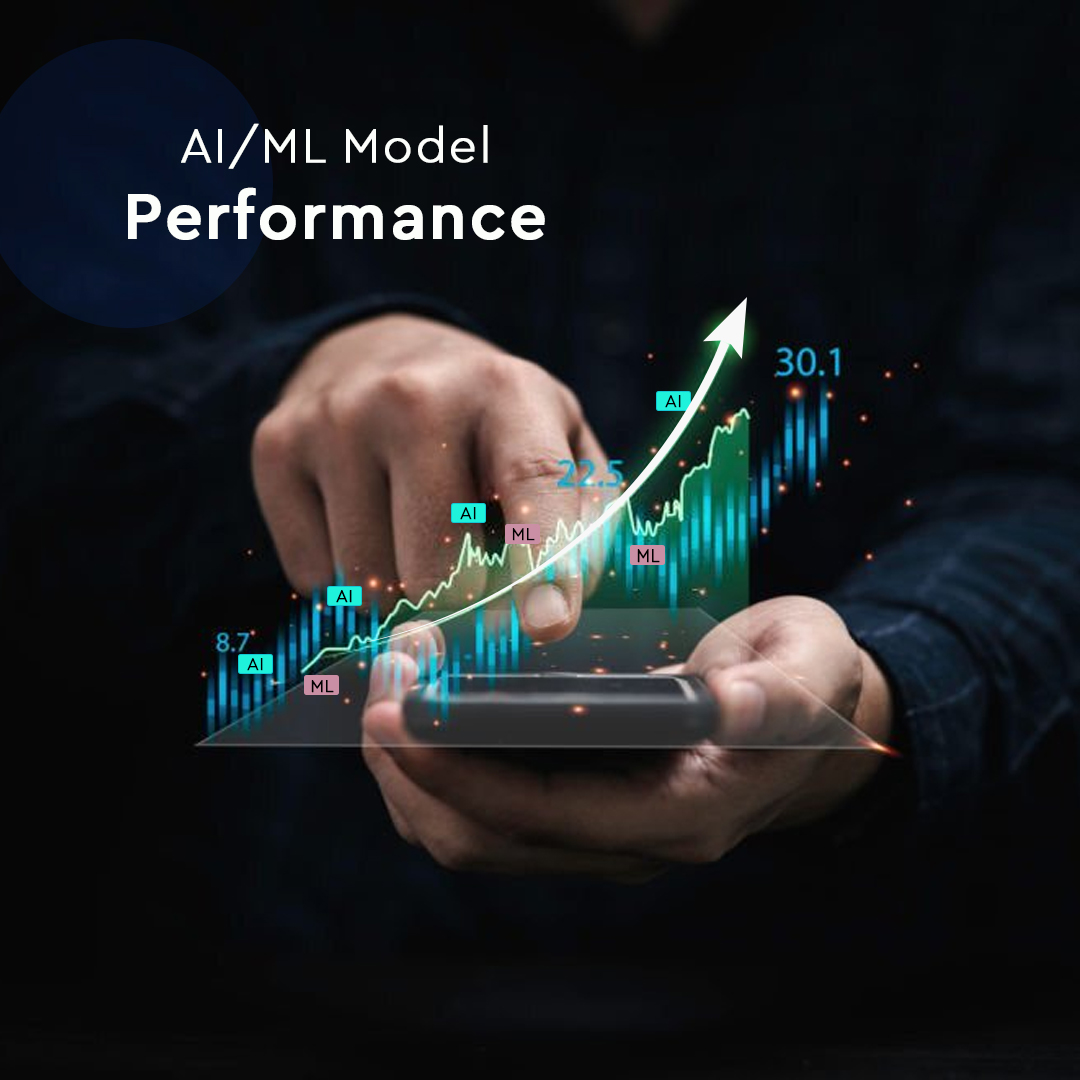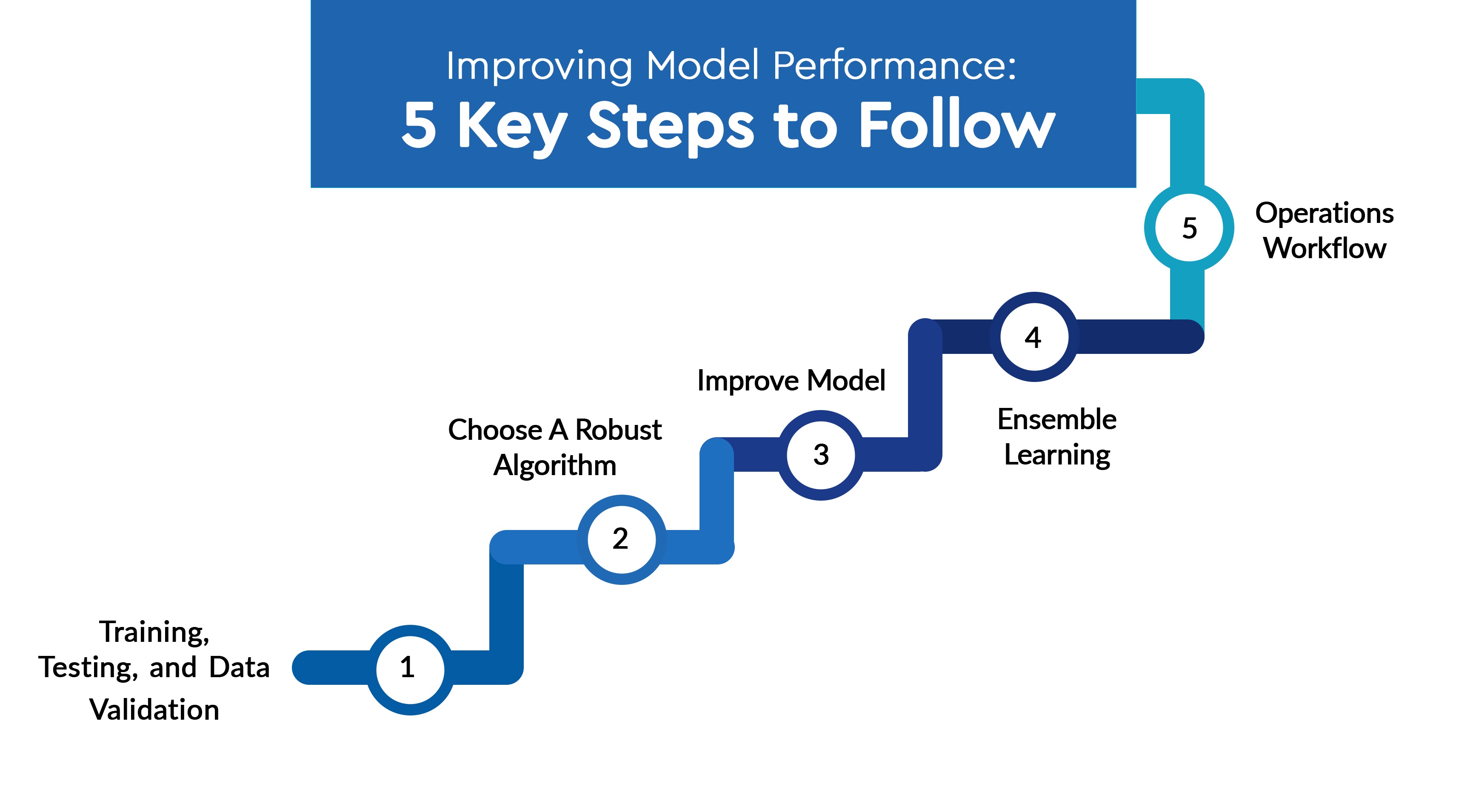Improving ML Model Performance: 5 Key Steps You Should Follow
According to a recent study from Stanford University researchers, this data-centric ML approach can reduce the amount of training data by anywhere between 10% and 50%, based on the ML task at hand. The effort and resources that ML teams save as a result can be very substantial.
“Most AI (Artificial Intelligence) software and initiatives fall under the broad category of machine learning. In accordance with this, the AI industry’s machine learning market is the biggest submarket. By 2030, this industry is projected to increase from its current size of about 140 billion dollars to almost two trillion dollars.”- Statista

Model Performance: Overview
Model performance refers to the evaluation of how well a business model is functioning. It is a crucial aspect of data science and is used to improve the effectiveness of the model. ML model performance metrics may involve evaluating the model’s accuracy (in classifying a data collection, for example), as well as its responsiveness to new data in real-time and other performance indicators. Improving model performance is essential for the success of a business.
NextGen Invent Corporation with its extensive experience in creating successful projects provides a 5-step framework for the process of improving model performance.
Who are the beneficiaries of this framework?
The primary beneficiaries of this framework are individuals and organizations that work with data-driven models. This includes professionals such as:
- Data scientists
- Decision scientists
- Data analysts
- Business Intelligence professionals
- Individuals with technical backgrounds who are involved in the development and implementation of data-driven models.
Improving Model Performance: 5 Key Steps to Follow
To obtain precise predictions and insights from your data, a machine learning model’s performance must be improved. There are five essential measures you must take to improve your model’s performance:

1. Training, Testing, and Data Validation
Training, Testing, and Data Validation are crucial steps in the process of evaluating model performance. A data scientist needs to ensure that they have enough data for training, testing, and validation of the model.
There are a few factors to consider deciding the type and number of training data sets you require, such as;
- Data size evaluation
- Use of statistical heuristic rule
- Model skill
- Complexities of the problem
- Individuals with technical backgrounds who are involved in the development and implementation of data-driven models.
The data should be representative of all scenarios and have superior quality. For example, in building an object identification algorithm for a company, it was found that the performance of the model could be as high as 99.99% when the object identification labelling was done more efficiently. Typically, the training and testing data should account for 30-40% of the data set, if the goal is to achieve substandard to high-performance results.
Therefore, it is essential to consider all factors before planning on which algorithm to use. Some of the leading machine learning algorithms include Linear Regression, Logistic Regression, Decision Tree, and Support Vector Machine (SVM).
2. Choose A Robust Algorithm
Algorithms are like the engines that power machine learning models and the data fed into them assists the model in learning and making accurate predictions. Inappropriate algorithm selection can produce subpar outcomes. To find the algorithm that works best for your data, it is crucial to test out many options. With this method, you can learn more about your data and the narrative it is trying to convey.
Choosing the right algorithm is dependent on:
- The specific requirements of your model,
- The type of data you are working with,
- The problem you are trying to solve.
Therefore, it is essential to consider all factors before planning on which algorithm to use. Some of the leading machine learning algorithms include Linear Regression, Logistic Regression, Decision Tree, and Support Vector Machine (SVM).
3. Improve Model
Improving the Model is another step in the process of evaluating model performance. This step is crucial in achieving an improved model and its quality.
Improving the model includes excluding and including the right features and performing hyperparameter tuning. Data and decision scientists typically apply these steps repeatedly. However, what is critical is the ability to apply industry knowledge to the scenarios in which the model is used and the availability of information. Applying all these steps improves the performance of the model.
4. Operations Workflow
A workflow is a systematic and monotonous pattern of activity that is achieved by well-organized resources to provide services. It contains past processes and upcoming processes and governs how data will be captured or paused, how the predicted results will be used, and all other things that can help in improving the model.
It has been found that even though the data was small and organized, the continuous flow of new data really helped to enhance the performance of the model within 1-3 months.
As the model is created to be used widely in various scenarios, it is beneficial to be aware of the situations where the model will not be a good fit instead of giving out incorrect results.
5. Ensemble Learning
Ensembling is the ultimate step in the process of evaluating model performance. By mixing the predictions from various models, ensemble learning is a broad meta-approach to machine learning that aims to improve model performance.
We are moving into the era of deep learning, and it is expected to be able to apply different statistical models, logical models, operation, and research models in combination with machine learning algorithms. The three primary classes of ensemble learning techniques are Bagging, Stacking, and Boosting.
Further read: Artificial Intelligence Future Business Trends
Wrapping Up
It is important to note that the model chosen from the start may have limitations and can only be improved to a certain level. Instead of attempting to push beyond these limitations, it is more effective to build on a unique model and improve it up to 99% of model performance issues. The five steps outlined in this framework have been proven to be effective ways to improve the performance of a model.
If you have any experience with improving a model, please share it with us at the email address provided. If you would like to learn more about this framework, please schedule an appointment with our experts. At NextGen, we provide an array of services to assist your models to perform better. We can assist with data preparation, algorithm selection, model training, evaluation, and optimization. With our expertise, you create robust and accurate models that deliver valuable insights and drive informed decision-making.
Stay In the Know
Get Latest updates and industry insights every month.
